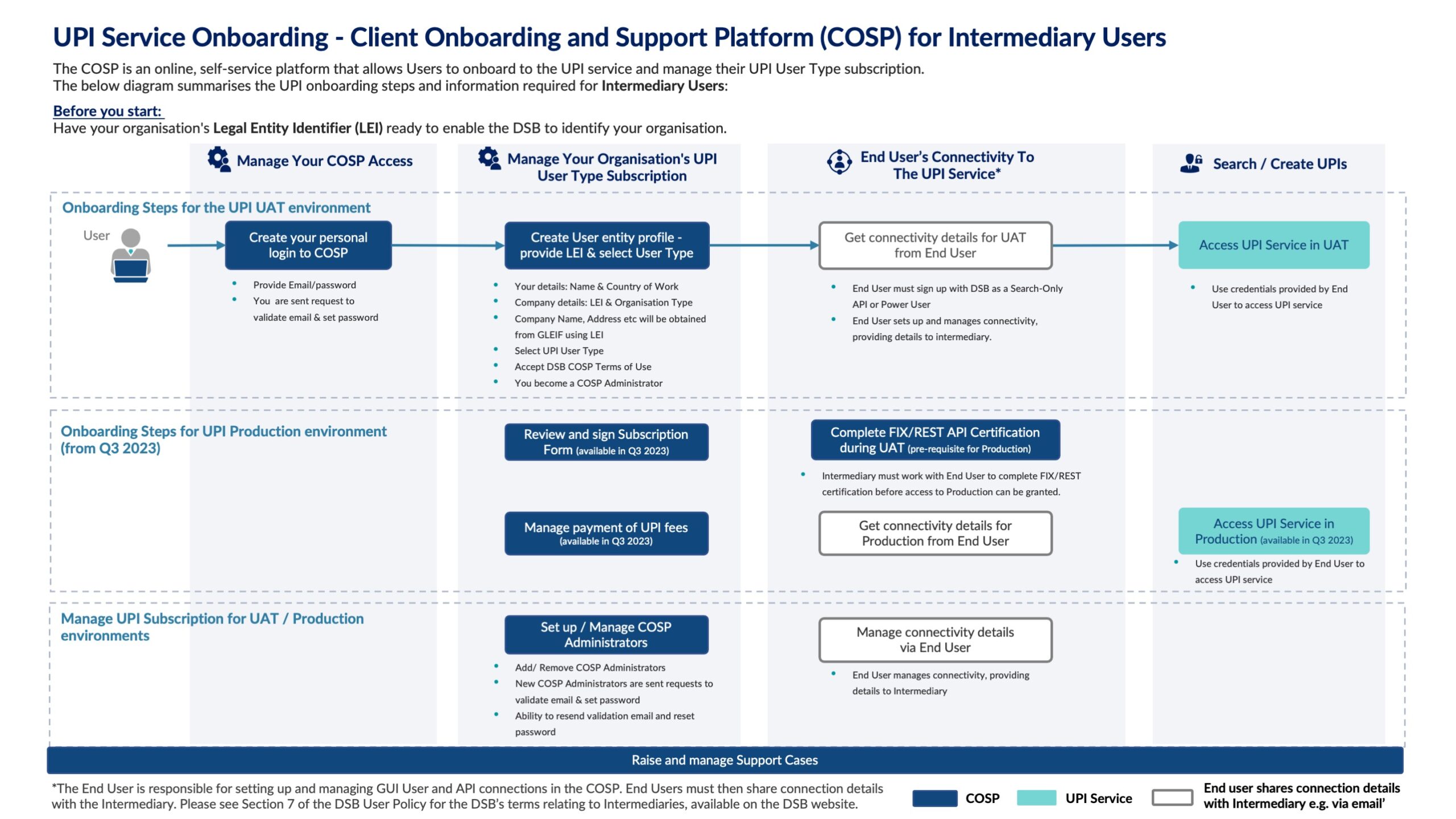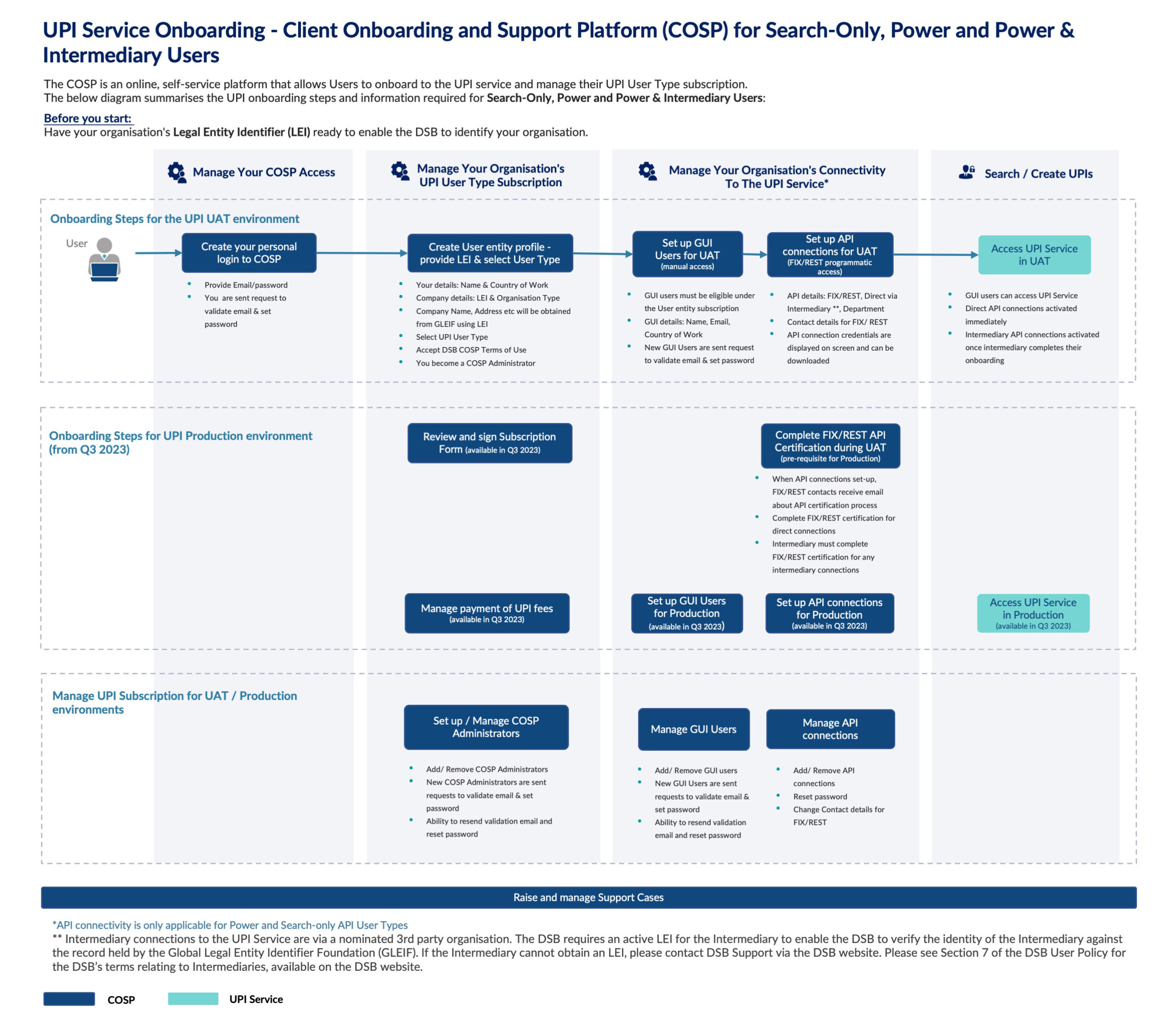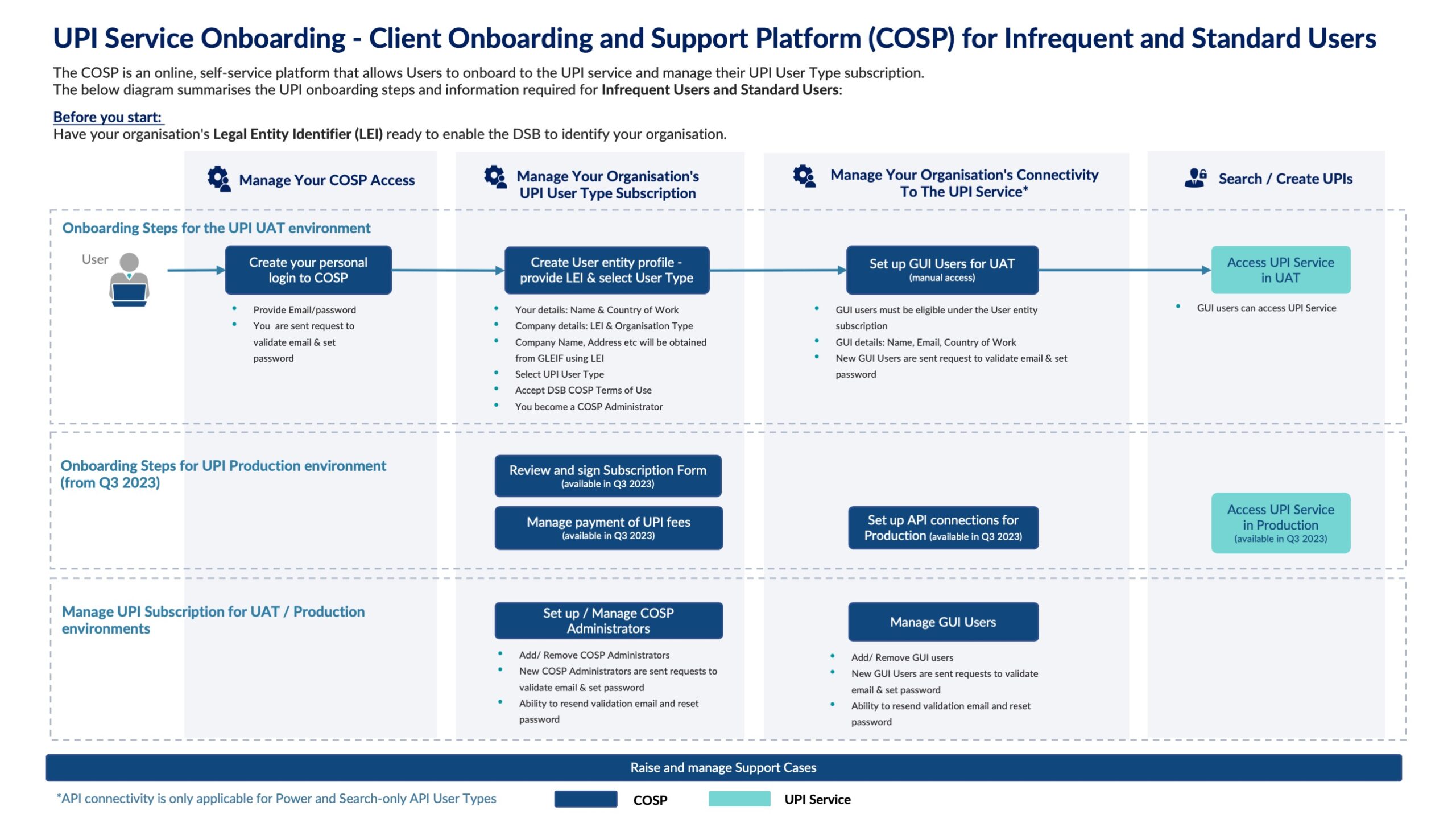Posted on 18th March 2025
The latest evidence of the most recent site test can be found here1.
1https://www.anna-dsb.com/wp-content/uploads/2025/03/BCP-Test-Attestation-2025.docx.pdf/
Posted on 18th March 2025
The latest evidence of the most recent site test can be found here1.
1https://www.anna-dsb.com/wp-content/uploads/2025/03/BCP-Test-Attestation-2025.docx.pdf/
Posted on 4th May 2023
ISO 4914 (the international standard that is the basis for the UPI) has a scope that covers only OTC derivatives (Swaps, Forwards and Non-Listed and Complex options) as specified in the mandate of the DSB (see: https://anna-web.org/derivatives-service-bureau/).
Therefore, Listed Derivatives (ETDs) fall outside of the scope of the UPI and are not supported by the DSB. For more information on the products covered, please visit our Product Definitions page.
The UPI Product Definitions form the basis of a UPI record. These UPI Product Definitions have been agreed by the DSB Product Committee and represent the full set of OTC derivative products for which the DSB can create UPIs.
UPI onboarding is done via the Client Onboarding and Support Platform (COSP). The COSP is an online, self-service platform that will allow fee-paying Users to perform the administrative tasks associated with onboarding and managing a UPI subscription.
Please have your organization’s Legal Entity Identifier (LEI) ready before you begin this process.
No, the OTC ISIN service and the UPI service require separate subscriptions, with separate fees. Here’s a summary of the UPI User Types and the associated fees.
Users submitting a value for Settlement Currency in any FX ISIN product template are advised that the attribute is optional and should not contain XXX without prior authorization of the DSB Product Committee.
Users are requested not to submit a value of XXX which is defined in the ISO 4217 standard as “no currency involved in the transaction” and thus is not seen as appropriate for use in FX instruments.
The Product Committee requests that users wishing to submit XXX as an input value should provide a business case to secretariat@anna-dsb.com with supporting information.
The FAQ addresses the fact that it is possible for a DSB FDL File to include more than one record for a particular ISIN.
This is a rare occurrence, but may happen when ESMA/the FCA publish data on FIRDS/FITRS after a set cut-off time and so the DSB may still be having unprocessed data for an ISIN, from the previous day, when a new data is received. This will result in multiple records for the same ISIN being recorded and so it is important for the user community to understand how these records should be handled.
Under these circumstances, the DSB recommends that the user should access the ToTV record with the latest LastModifiedDate, as that would have a complete dataset for that ISIN on that day.
Where there is a duplicate entry, the record with LastModifiedDate is the latest dataset for that ISIN.
The DSB requires the entry of underlying Reference Rates based on entries in the current version of the FpML Coding Scheme (eg: “USD-SOFR-COMPOUND”). In order to support conformance to ISO20022, the DSB also maps each FpML Reference Rate to an equivalent ISO Reference Rate value that is determined in the following way:
It is assumed that within the ISO20022 standard, BenchmarkCurveName2Code is, and will remain, a subset of BenchmarkCurveNameCode. However, the two code sets have been listed separately in the above methodology in order to recognise their different capacities within the relevant regulations.
This approach is intended to allow for the reference rates currently published by FpML and any additional reference rates that may be added in due course.
Q: When was the last DR test?
A: The last DSB DR test was invoked against the DSB UAT environment between the 15th June – 29th June 2024. The last DSB DR test was invoked against the DSB Production environment between Saturday 23rd November 2024 – Sunday 24th November 2024.
Q: How long did the DSB take to complete the invocation?
A: The DSB successfully completed the invocation to the secondary region (UAT) in 3.5 hours with no data loss. The Recovery Time Objective (RTO) is 4 hours. The DSB successfully completed invocation to the secondary region (Production) in 3 hours and 11 minutes with no data loss. The RTO is 4 hours.
Q: When is the next DR test?
A: The DSB is able to confirm the following dates for both UAT and Production tests:
Q: What were the results of the latest DR test?
A: The DSB Successfully completed testing in the Production environment between Saturday 23rd November 2024 – Sunday 24th November 2024.
The RTO was 3 hours 11 minutes with no data loss.

The Derivatives Service Bureau (DSB) Limited is a company registered in England and Wales (No. 10542063)
LEI: 529900ORI6ALO8ABW676
Registered Address:
The Derivatives Service Bureau (DSB) Limited,
Randall House,
6 Dowgate Hill,
London, EC4R 2SU,
United Kingdom
© 2025 The Derivatives Service Bureau (DSB) Limited. All Rights Reserved.


